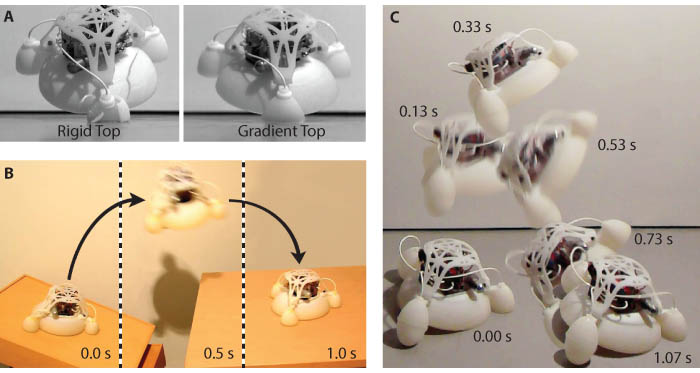Biologically
inspired robots with soft or partially soft bodies have the potential to be
more robust and adaptable, and safer for human interaction, than traditional
rigid robots. A key challenge in their manufacture is the integration of soft
and hard materials. A Harvard MRSEC team led by Katia Bertoldi, Jennifer
Lewis, George Whitesides, and Rob Wood has used three-dimensional
(3D) printing to create soft robots that move autonomously. Described in the
July 10, 2015 issue of Science,
they use multimaterial 3-D printing to manufacture a robot whose body
transitions from a rigid core to a soft exterior (shown in A). This stiffness
gradient, spanning three orders of magnitude in elastic modulus, enables
reliable interfacing between rigid driving components (controller, battery,
etc.) and the primarily soft body, while also enhancing performance. Powered by
combustion of butane and oxygen, this robot is able to perform untethered
jumping (shown in B & C).